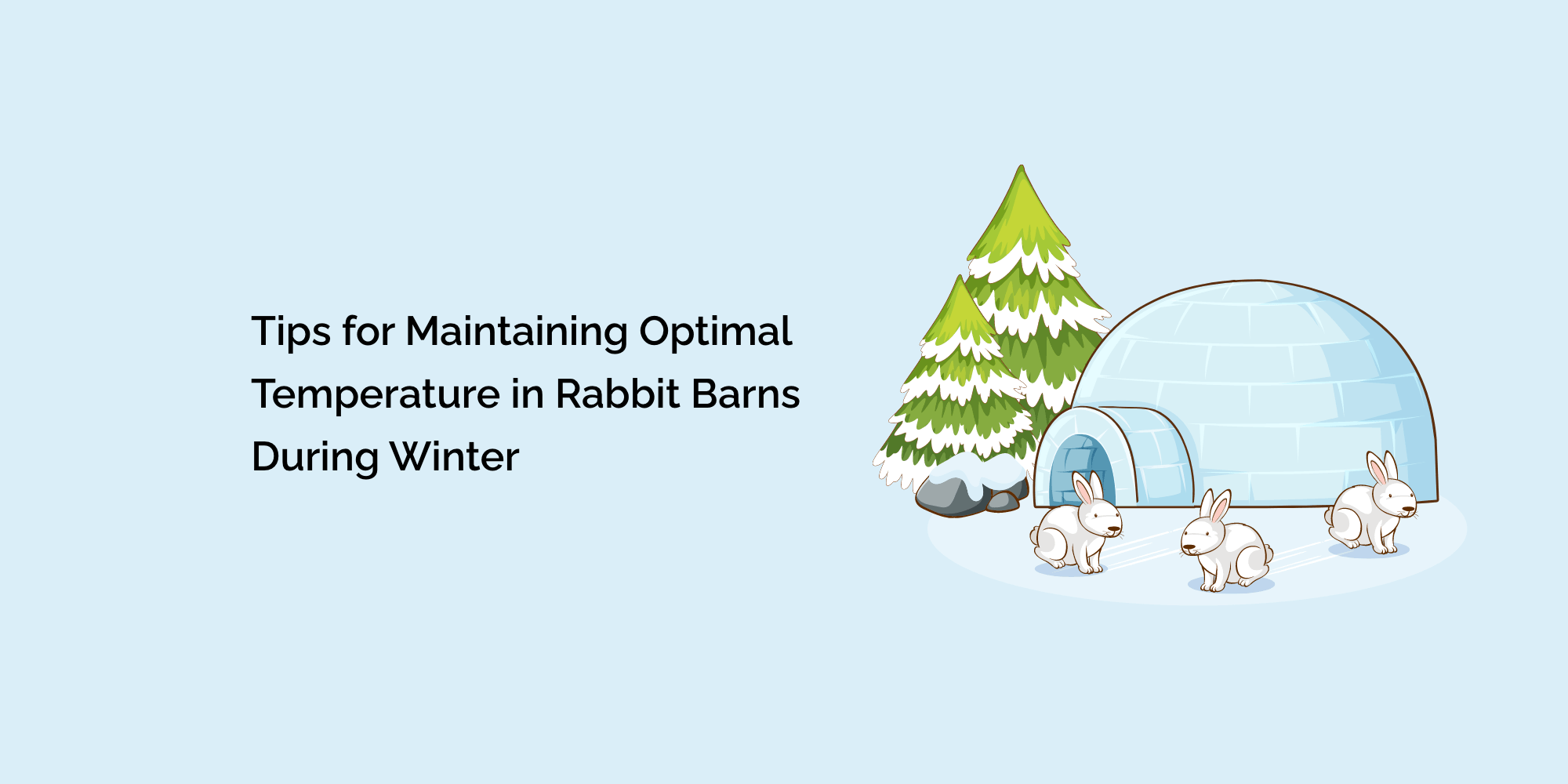As winter descends upon us, rabbit breeders and farmers face the daunting challenge of ensuring their furry companions are protected from the harsh cold. Rabbits are known for their sensitivity to extreme temperatures, and maintaining the right environment during winter is crucial to their overall well-being and productivity.
In this comprehensive blog, we will explore essential tips for maintaining optimal temperature in rabbit barns during winter, so you can ensure your rabbits stay healthy, happy, and thriving throughout the cold season.
Insulate the Barn Effectively
The first step in creating a warm and comfortable environment for your rabbits is to insulate the barn adequately. Proper insulation is the foundation for regulating the temperature within the rabbit habitat. Insulate the walls, ceiling, and even the floor if possible, using materials like straw, foam, or fiberglass.
These materials create a solid barrier that prevents heat loss and keeps the cold air outside. Pay extra attention to potential gaps or cracks that may compromise the insulation, as even the smallest opening can lead to significant heat loss.
Ensure Proper Ventilation
While insulation is essential, it's equally crucial to have proper ventilation in the rabbit barn. Good ventilation helps prevent the buildup of humidity and stale air, which can lead to condensation and respiratory issues among the rabbits.
Install vents near the ceiling to allow warm, moist air to escape, while also ensuring there are no direct drafts reaching the rabbit living areas. This balanced approach allows for a continuous flow of fresh air without exposing the rabbits to cold drafts.
Utilize Heat Lamps and Heaters
Heat lamps and heaters can be valuable tools in maintaining a warm and cozy environment for your rabbits during winter. Position heat lamps at a safe distance from the rabbit cages to provide localized warmth. These lamps mimic the feeling of the sun's rays and create a comfortable spot for the rabbits to rest and seek warmth when needed.
Additionally, consider using electric heaters in larger barns to supplement the heat distribution. However, always ensure that the heaters are placed securely, away from any flammable materials, and follow safety guidelines to avoid accidents.
Implement a Deep Litter System
A deep litter system is a natural and effective way to keep the barn warm while providing additional insulation. Begin by spreading a thick layer of straw or hay on the barn floor.
As the rabbits move around and burrow in the bedding, the material generates heat, creating a natural and cozy environment for them. The deep litter system also helps control odors and moisture, promoting a healthier living space for the rabbits during winter.
Monitor Temperature and Humidity Levels
To maintain optimal conditions in the rabbit barn, it's crucial to monitor temperature and humidity levels regularly. Invest in a reliable thermometer and hygrometer to keep track of these factors. The ideal temperature range for rabbits during winter typically falls between 40°F to 65°F (4.5°C to 18°C).
Monitoring humidity is equally important, and levels should ideally be kept around 50-70%. Maintaining the right balance of temperature and humidity ensures that your rabbits are not exposed to excessive dryness, which can irritate their respiratory systems.
Use Heated Water Bottles
Access to fresh water is essential for rabbits throughout the year, but during winter, the water in their bottles can quickly freeze. Combat this issue by using heated water bottles or electrically heated water bowls.
These devices ensure a continuous supply of liquid water, preventing dehydration and providing additional warmth to the rabbits when they drink. Be sure to check the water supply regularly to ensure it remains unfrozen and readily available.
Provide Adequate Bedding and Nest Boxes
Adequate bedding is critical for keeping rabbits warm and dry during winter. Choose high-quality materials like straw or hay that offer excellent insulation properties. Make sure to place extra bedding inside the nest boxes, as these areas are where the rabbits spend most of their time resting and seeking comfort. Check and change the bedding regularly to maintain cleanliness and freshness, which is crucial for the rabbits' health and comfort.
Implement a Feeding Routine
During winter, rabbits may require additional calories to maintain their body temperature. Develop a feeding routine that includes slightly increasing the rabbits' food portions.
Providing nutrient-rich and energy-dense foods will not only provide the necessary energy for warmth but also help in ensuring their overall health and well-being throughout the colder months.
Conclusion
Winter can be a challenging season for rabbits, but with proper care and attention to their environmental needs, you can create a safe and cozy haven for them in the rabbit barn. Effective insulation, ventilation, the use of heat lamps and heaters, the implementation of a deep litter system, and regular monitoring of temperature and humidity levels are all essential in maintaining optimal temperature during winter.
Additionally, providing heated water bottles, adequate bedding, and a balanced feeding routine are crucial for ensuring your rabbits stay healthy, happy, and thriving throughout the cold season. By following these tips, you'll be well-prepared to provide your furry friends with the comfort and care they deserve during the winter months.








